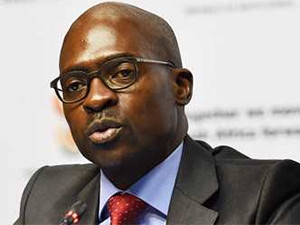
The Department of Home Affairs (DHA) has blamed a glitch on its biometrics system for the delays passengers experienced at OR Tambo International Airport.
The DHA introduced the biometrics system on Friday last week at ORT Airport - Africa's biggest and busiest airport, facilitating approximately 19 million passengers a year - in a bid to bolster SA's national security.
However, since the commencement of the process, travellers and flights have been delayed as the department faced operational difficulties.
Home affairs minister Malusi Gigaba yesterday explained the glitch resulted in South African travellers' biometrics details - 10 fingerprints and a photo - also getting captured at the airport regardless of the fact that the DHA already has those details in the national population registrar (NPR).
According to Gigaba, the problem has been fixed, meaning South African travellers will not need to go through the biometrics process.
He added the glitch in the system had caused it to fail to link the NPR with the movement control system (MCS), a repository where all newly-captured details of international travellers are stored.
The department's IT team is working on linking the NPR and the MCS systems, said Gigaba.
Zero delays
The minister said as of Thursday, the solution the department had implemented was working well and the delays experienced had decreased, with the number of flights delayed due to the processing of passengers having dropped to almost zero.
Giving background on the issue, he said last December, the department launched the MCS biometric pilot programme, which was rolled out at selected passenger processing counters at the four pilot airports - Lanseria, King Shaka International Airport, Cape Town International Airport and in the transit area at OR Tambo International Airport.
"We exempted travellers transiting from using transit visas, allowing for capturing of biometrics of travellers on arrival. As a benefit, this assisted greatly in improving facilitation of travellers and in easing movement, as well as in heightening security for all."
The benefits included improved capacity to capture travellers' biometrics in addition to normal scanning of passports, he noted, commenting that such improved record of traveller movement on the DHA's enhanced MCS meant improved safety for all clients and citizens.
"With the biometric system in place, we were also able to waive the requirement for Chinese nationals having to apply for visas in person, on condition that their biometric data is captured upon arrival. Two dedicated biometric counters were allocated in the arrivals terminal in January for this purpose," said Gigaba.
He pointed out that this being a phased-in approach, from 27 June, in line with the DHA's modernisation programme, the department increased the roll-out of biometrics, to cover 65% of its counters, including at the terminals for arrivals and transit.
Total mayhem
Gigaba said the upgrades impacted on the processing of travellers, particularly on 1 July.
However, he said other factors contributed to the problems encountered, including higher than expected traveller volumes commensurate with school holidays and summer holidays in the northern hemisphere. On 1 July 2016, he said, from 4pm to 9pm, there were 4 341 arrivals and 6 578 departures.
The queuing system and fast-tracking of delayed travellers, by airlines, as well as some travellers not checking-in on time, compounded the situation, said Gigaba.
"Passengers were rerouted from Terminal A Departure to Terminal B Departure to alleviate congestion, thus exacerbating the situation at the Central Terminal Building. There was also insufficient communication to travellers on what to expect before travelling, and on the arrangement that they should immediately proceed through to immigration on arrival.
The other problems were lack of communication at the terminals and reluctance, on the part of some travellers, to use biometrics, the minister noted, adding that increased processing time, related to staff complement, coupled with officials posted still needing to adjust sufficiently to the changes, was another challenge.
"I have directed our senior managers to step up the biometrics communication campaign, effectively and sufficiently to inform the public about the biometric system and its benefits. They will also engage conveyances to come on board, for instance by airing a short introductory on biometrics prior to landing in the country, and by informing travellers to proceed directly to immigration after check-in.
"Communication, periodically, by ACSA, on the intercom system and signage, will greatly assist in informing travellers throughout the airport."
Share